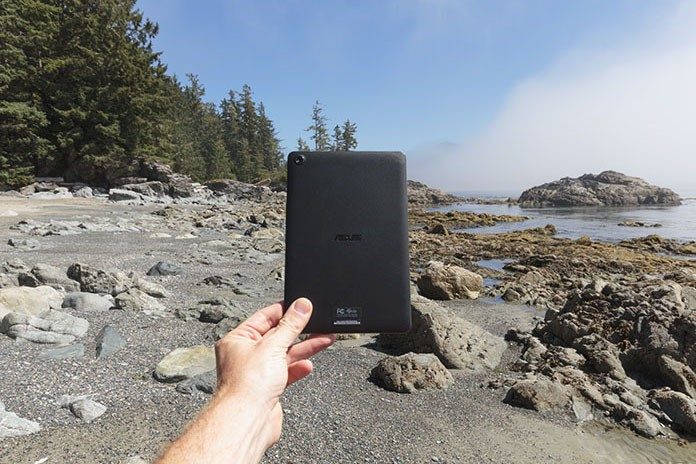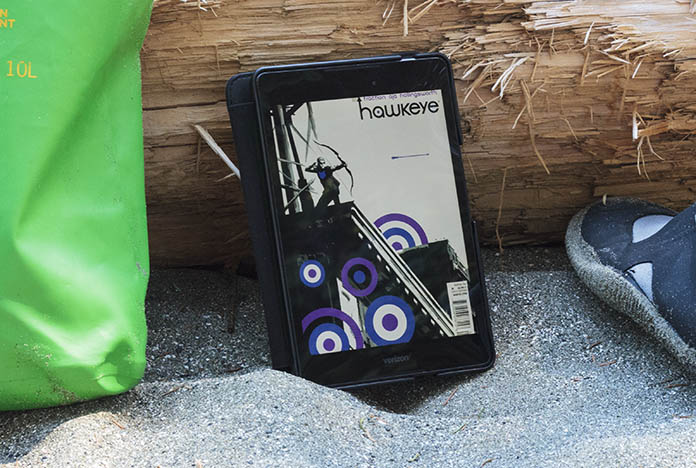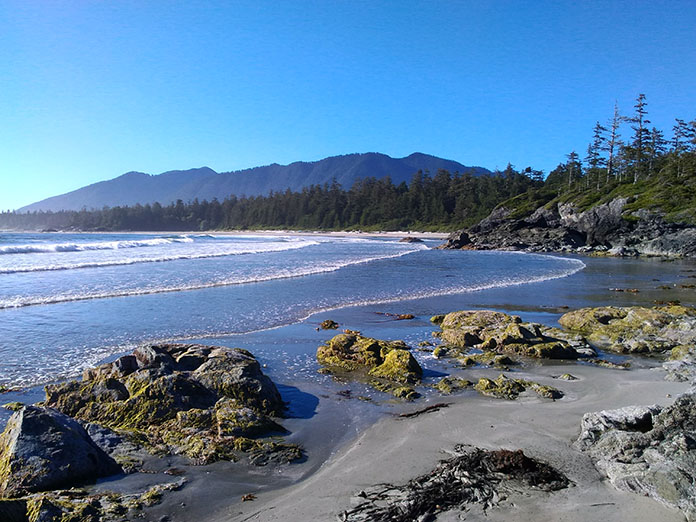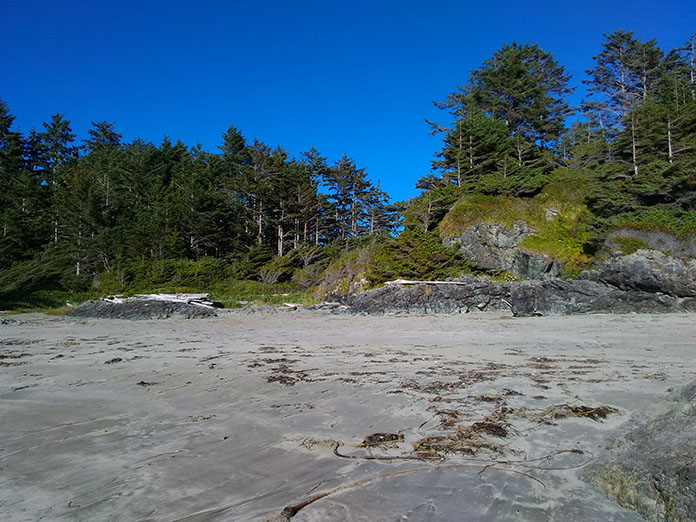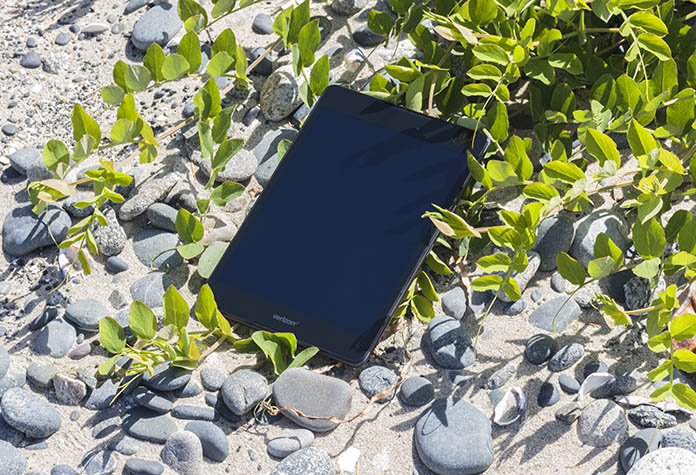Once a year, my wife and I head into the wilderness for a week in the middle of nowhere. There’s something intensely refreshing about escaping reality, responsibility, and everyone else in the world. This year’s trip was a nine-day kayaking excursion on the west coast of Vancouver Island, where the vast Pacific Ocean crashes into a ragged, weathered coastline. Our new ZenPad Z8 tablet came along for the ride.
The ZenPad is admittedly an odd choice for this field test. A Verizon exclusive with a 4G LTE modem to complement 802.11ac Wi-Fi, it’s designed to offer fast connectivity pretty much everywhere except the middle of nowhere. But you can still get a lot out of a tablet off the grid, especially if you have to pack light enough to squeeze into the sleek fiberglass hull of an ocean kayak.
At only 8 mm thick and 310 grams, the ZenPad Z8 is thin enough and light enough to fit into the tightest spaces. Despite being small on the outside, it’s huge on the inside. 16GB of internal flash combines with up to 128GB of microSD storage to let you tote a massive content library on the go, from book and magazines to games and videos.
The screen is fantastic with content of any kind. At 7.9”, it nicely straddles the line between not too big and not too small. The narrow bezels on the sides make it feel even bigger than it actually is.
Images and text are crystal clear and razor sharp thanks to the 1536×2048 resolution, which matches the Retina display on the iPad Mini 4. Rich colors make everything jump off the screen. Comic books Graphic novels are my go-to reading material on trips like these, and they look more vivid than my fondest childhood memories of turning paper pages.
The screen’s color temperature, saturation, and hue can all be adjusted to suit your preferences. There’s also a low-blue-light mode that’s easier on the eyes, especially for reading in the evening.
Like basically every other tablet, the ZenPad Z8 has a reflective display that doesn’t look its best in direct sunlight. Fortunately, the backlight is bright enough to let you read dark text on a light background while getting a tan. Everything looks great in the shade and in the evening light—and in the tent and other indoor environments.
Watching videos in the wilderness feels a bit wrong to me, at least with the beautiful weather we had on our trip. But I’ve also endured weeks of thick, oppressive fog and cold, horizontal rain that kept us hunkered down in the tent or under a tarp. It’s nice to have more entertainment options when Mother Nature doesn’t cooperate.
The wide viewing angles of the IPS display make the screen great for sharing with a small crowd, and the front-facing speakers are loud enough for everyone to hear clearly. Although our cramped two-person tent doesn’t require much volume, the ZenPad has enough oomph to fill decent-sized rooms. It can also simulate surround sound over headphones.
There are limits to what’s possible without a data connection. Netflix is off the table, as is Pokémon Go. But the ZenPad Z8 can still play local videos and loads of offline games. The Qualcomm Snapdragon 650 processor has six CPU cores and Adreno 510 graphics, which combine with 2GB of RAM to deliver great performance for games and other apps.
The ZenPad is nicely balanced, with a textured back that has plenty of grip. It’s comfortable to hold for hours on end. The SIM and microSD slots are easily accessible through a door on the side, so you can swap cards in seconds. And you’ll never plug in the charger the wrong way thanks to the reversible Type-C USB connector on the bottom.
Squeezing a camera into a device this thin requires compromises, so the picture quality doesn’t compare to what’s captured by the DSLR and multiple lenses that accompany us into the wild. The rear-facing 8MP shooter still takes nice shots, though. See for yourself:
Selfies aren’t recommended after nine days in the bush without a proper shower or shave. The Z8’s front-facing 2MP camera exposes every detail, and the beautification mode can only do so much. The secondary camera works well back in civilization, though, especially for video chat.
Laptop Magazine got four hours of 4G web surfing time out of the ZenPad’s 4680-mAh battery, and the tablet lasts even longer when it’s not pulling data off wireless networks. For longer trips, you’ll want to bring a power bank like our ultra-portable ZenPower. It squeezes 10050 mAh into a body about the size of a deck of cards, putting two full charges in the palm of your hand. Asking price: only $19.
 In addition to bringing the ZenPower, we packed Verizon’s $35 tablet case. It masks the tablet’s thinness, which isn’t ideal, but the extra material nicely protects the ZenPad from the outside world.
In addition to bringing the ZenPower, we packed Verizon’s $35 tablet case. It masks the tablet’s thinness, which isn’t ideal, but the extra material nicely protects the ZenPad from the outside world.
The magnetic cover turns the tablet on and off automatically when the case is opened and closed. It can also prop up the tablet at multiple angles to suit the environment. The Verizon case is a nice alternative to our own magnetic folio for the Z8.
If you want to bring a tablet to the edge of the world—or anywhere else—the ZenPad Z8 is available exclusively from Verizon for $250 (or $150 with a two-year contract). Where would you take it?

